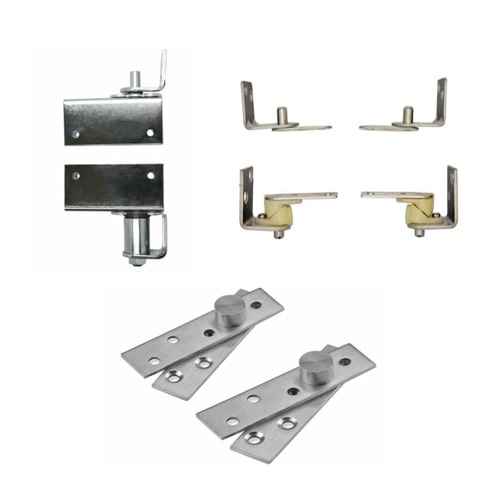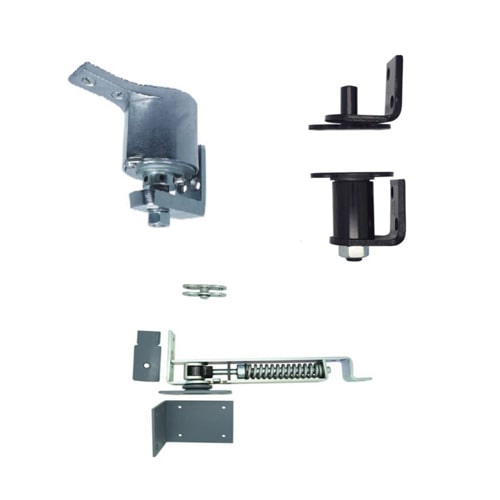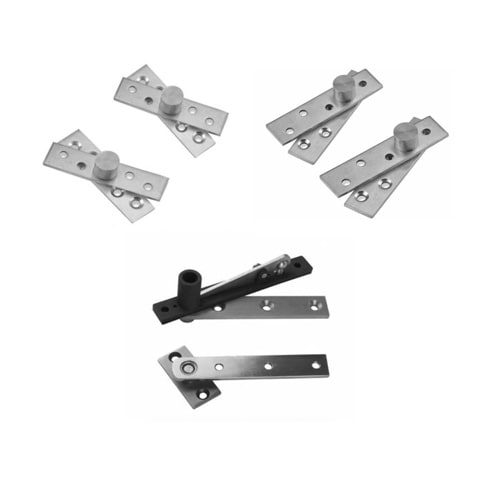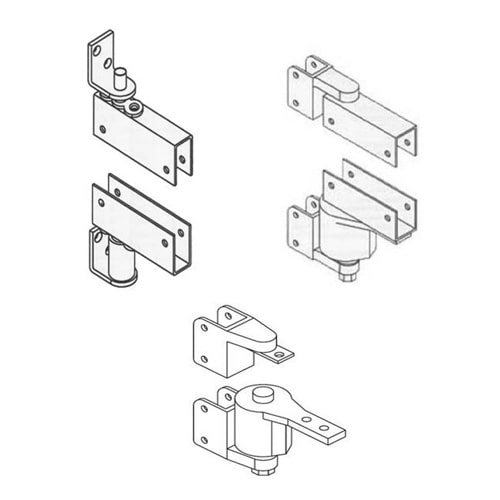Here are the key features and characteristics of pivot hinges:
-
Design:
- Pivot hinges consist of two plates—one plate is attached to the top or bottom of the door, and the other plate is attached to the door frame or floor.
- The two plates are connected by a pin or rod, creating a pivot point around which the door can rotate.
-
Mounting:
- Pivot hinges are typically mounted at the top and bottom of the door or near the center of the door's height.
- They can be surface-mounted or concealed within the door and frame for a cleaner aesthetic.
-
Functionality:
- Pivot hinges allow the door to rotate smoothly around a central point, enabling the door to swing open in both directions.
- Doors with pivot hinges can open 180 degrees or more, providing a wide opening.
-
Applications:
- Pivot hinges are commonly used in various applications, including interior and exterior doors, glass doors, large entry doors, and doors with unusual shapes or sizes.
- They are popular in modern and contemporary architectural designs, offering a sleek and minimalist appearance.
-
Weight Capacity:
- Pivot hinges are often chosen for heavy or oversized doors due to their ability to distribute the door's weight evenly across the pivot point.
-
Concealed Pivot Hinges:
- Some pivot hinges are designed to be concealed within the door and frame, providing a clean and unobtrusive look.
- Concealed pivot hinges are often used for aesthetic reasons or in contemporary design settings.
Pivot hinges provide a unique and functional alternative to traditional hinges, especially in situations where a door needs to have a wide range of motion or where a clean and modern appearance is desired. They offer flexibility in design and can contribute to the overall aesthetics of a space.
Our most popular double action pivot hinge is the Bommer 7512.




